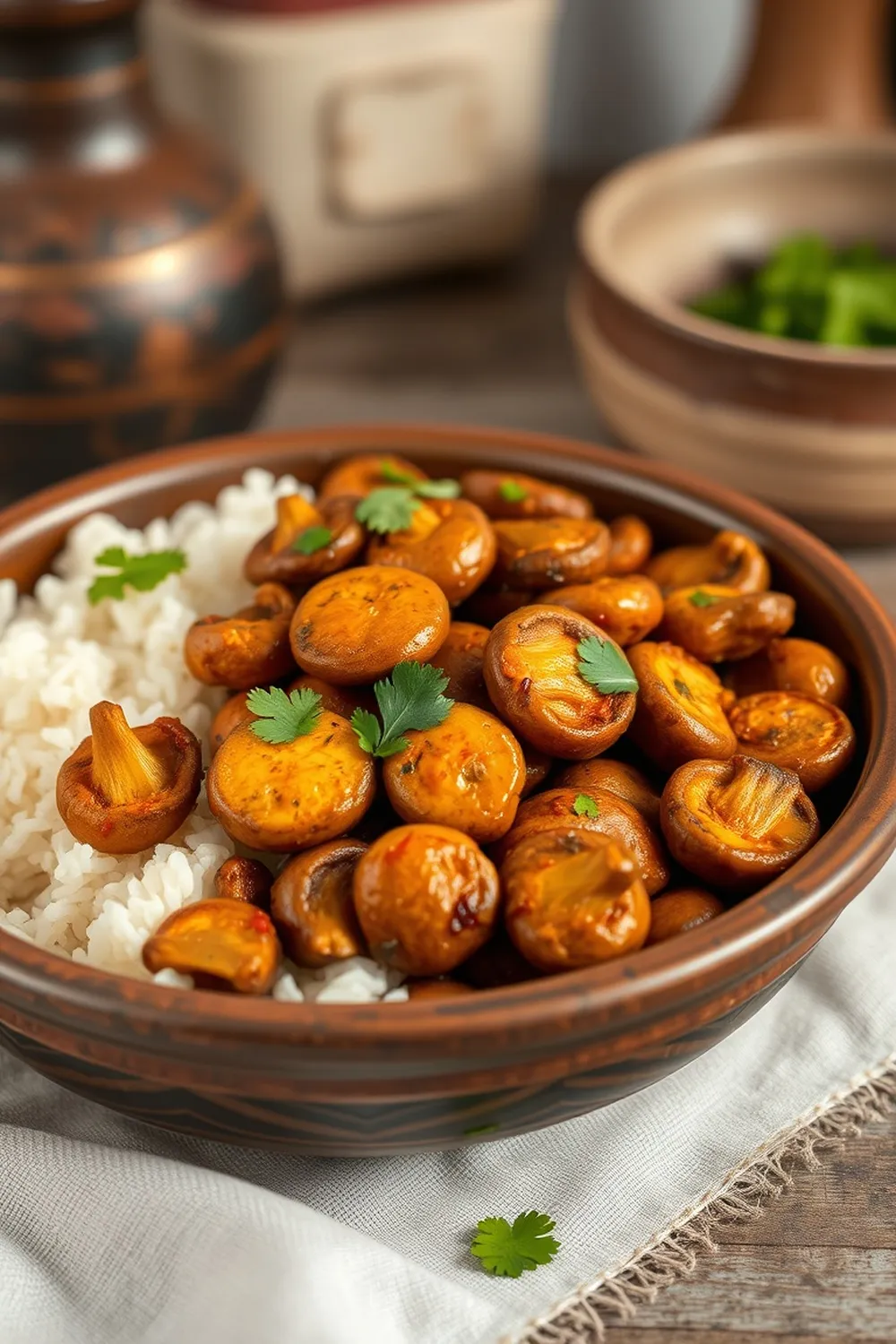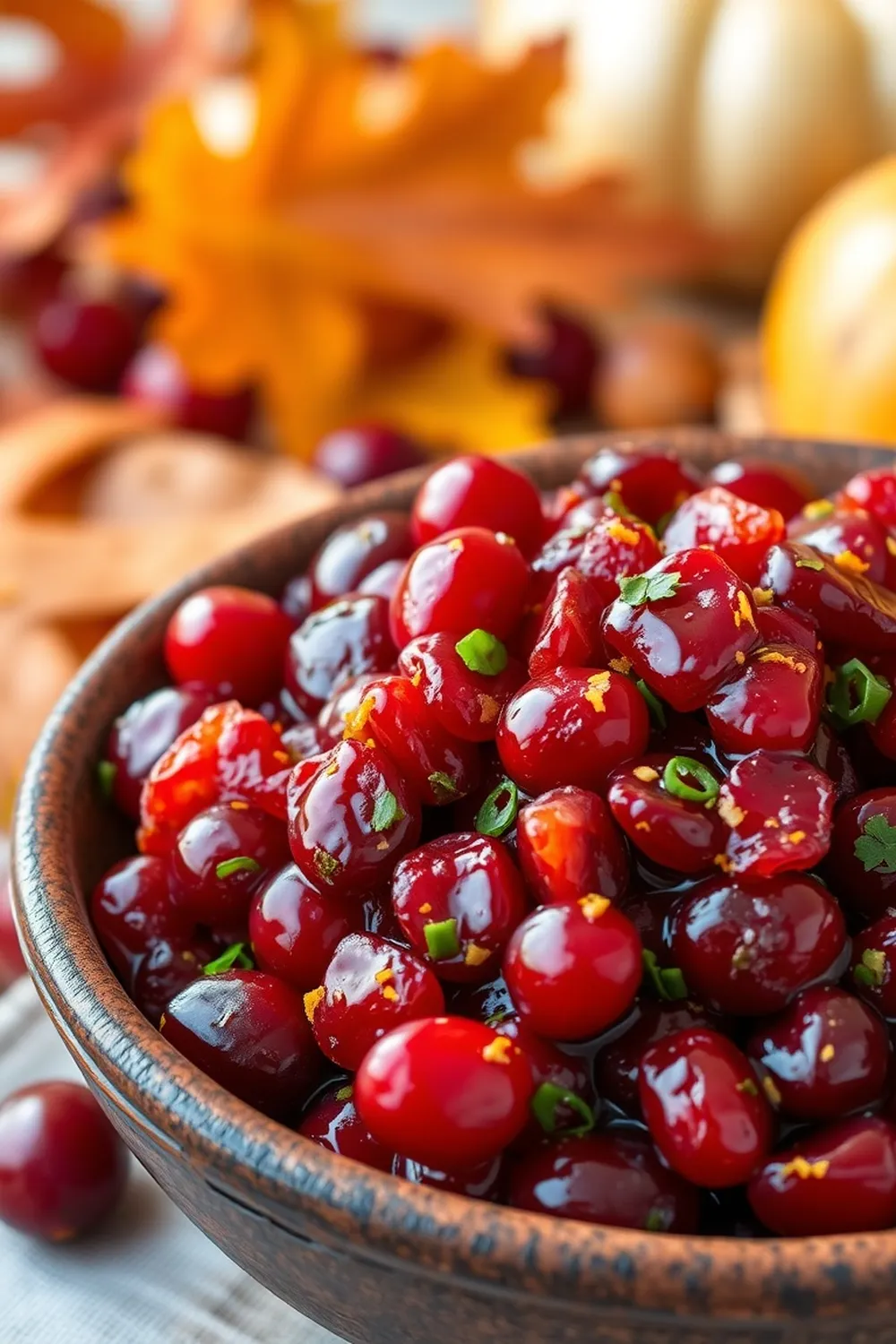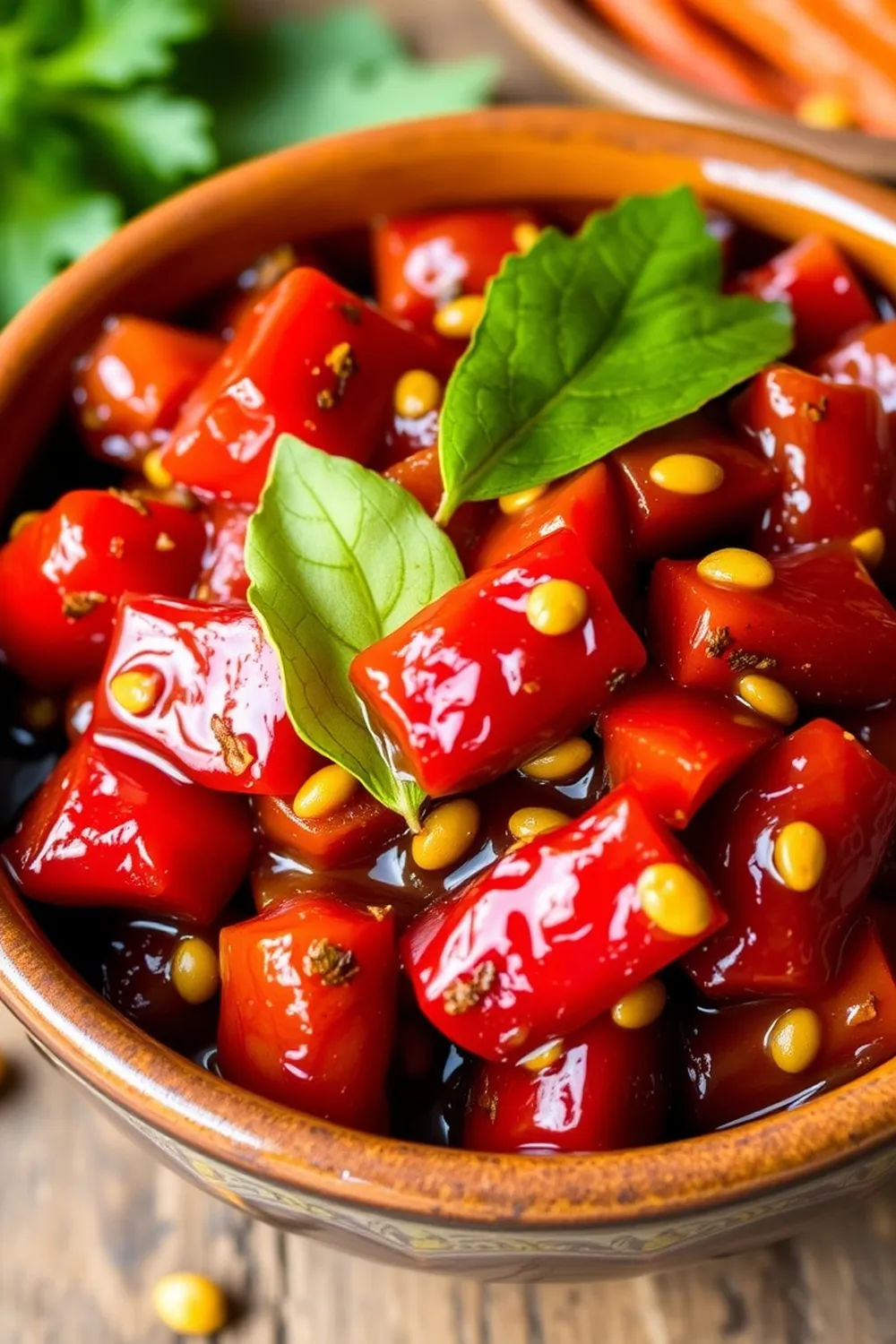- Prepare homemade pickle masala by dry roasting yellow mustard seeds, cumin seeds, fennel seeds, coriander seeds, and fenugreek seeds (methi) in a pan until aromatic.
- Cool the roasted spices and grind into a coarse powder. Set aside.
- Heat mustard oil in a kadai until it reaches smoking point, then let it cool slightly.
- Add mustard seeds, fennel seeds, fenugreek seeds (methi), ajwain (carom seeds), hing (asafoetida), and kalonji (nigella seeds) to the oil. Cook until aromatic.
- Add chopped radish, carrot, ginger, and garlic. Cook on low flame until the vegetables slightly shrink but remain crunchy.
- Mix in chili powder, turmeric powder, salt, and sugar. Cook for a minute to let the flavors combine.
- Cool the mixture completely, then add vinegar and mix well.
- Store the pickle in a clean, dry glass jar. Refrigerate for up to 2 months.
- Calories:2340 kcal25%
- Energy:9790 kJ22%
- Protein:12 g28%
- Carbohydrates:84 mg40%
- Sugar:40 mg8%
- Salt:7548 g25%
- Fat:225 g20%
Last Updated on 4 months by Neha Deshmukh
Authentic Indian Radish-Carrot Pickle Recipe – Mustard Oil & Spice Blend
Introduction
There’s just something magical about a homemade pickle, isn’t there? The vibrant flavors, the satisfying crunch… it’s a little jar of sunshine! This radish and carrot pickle (or achar, as we call it in India) is a family favorite, and I’m so excited to share it with you. I first made this when I was trying to recreate my grandmother’s recipe, and after a few attempts, I finally got it just right. It’s a little bit spicy, a little bit tangy, and completely addictive. Get ready to add a burst of Indian flavor to your meals!
Why You’ll Love This Recipe
This isn’t just any pickle recipe. It’s a taste of home, a celebration of simple ingredients, and a fantastic way to add a zing to your everyday meals. Here’s why you’ll adore it:
- Authentic Flavor: We’re using traditional methods and spices for a truly authentic Indian taste.
- Crunchy Texture: The vegetables stay beautifully crisp, offering a delightful bite.
- Easy to Make: Don’t let the word “pickle” intimidate you – it’s surprisingly straightforward!
- Long-Lasting: Properly stored, this pickle will last for months, bringing joy to your table whenever you crave it.
Ingredients
Here’s what you’ll need to create this delicious pickle:
- 0.5 tbsp yellow mustard seeds
- 0.5 tsp mustard
- 0.5 tbsp cumin
- 0.5 tbsp fennel
- 1 tsp coriander seeds
- 0.25 tsp methi (fenugreek seeds)
- 1 cup mustard oil
- 1 tsp mustard
- 1 tsp fennel
- 0.25 tsp methi (fenugreek seeds)
- 0.25 tsp ajwain (carom seeds)
- 0.25 tsp hing (asafoetida)
- 1 tbsp kalonji (nigella seeds)
- 1.5 cup radish, chopped
- 1.5 cup carrot, chopped
- 4 tbsp ginger, chopped
- 15 cloves garlic, chopped
- 2 tbsp chilli powder
- 1 tsp turmeric
- 1 tbsp salt
- 2 tbsp sugar
- 0.25 cup vinegar
Ingredient Notes
Let’s talk ingredients! A few tips to ensure your pickle turns out perfectly:
- Mustard Oil: This is key. It gives the pickle its distinctive flavor. We’ll talk more about it below.
- Spice Blend: Don’t skimp on the spices! Freshly roasting and grinding them makes a huge difference.
- Radish & Carrot: Choose firm, fresh produce. They should be crisp and brightly colored. I prefer using red radishes for a bit of extra color.
- Hing (Asafoetida): A little goes a long way! It adds a unique savory depth.
- Vinegar: I usually use white vinegar, but you can experiment with other types (see FAQs).
Mustard Oil: The Heart of the Pickle
Mustard oil is the soul of many Indian pickles. It has a pungent aroma and a distinctive flavor that really shines through. It’s important to heat the oil until it smokes – this removes the strong, raw flavor and gives it a more mellow, nutty taste. Don’t worry, it won’t taste burnt!
Spice Blend: Regional Variations & Aroma
The spice blend is where you can really customize this pickle. While this recipe is a great starting point, feel free to adjust the amounts to your liking. Some regions in India add a pinch of black cardamom or cloves for extra warmth. Roasting the spices is crucial – it unlocks their aroma and intensifies their flavor.
Radish & Carrot: Choosing the Right Produce
For the best crunch, choose radishes and carrots that are firm and fresh. Avoid any that are soft or have blemishes. I like to chop the vegetables into bite-sized pieces, about ½ inch thick. This ensures they cook evenly and are easy to eat.
Step-By-Step Instructions
Alright, let’s get pickling!
- Make the Pickle Masala: First, we’ll prepare the spice blend. Dry roast the yellow mustard seeds, mustard, cumin, fennel, coriander seeds, and methi in a pan over medium heat until fragrant. This usually takes about 3-5 minutes. Be careful not to burn them!
- Grind the Spices: Let the roasted spices cool completely, then grind them into a coarse powder using a spice grinder or a mortar and pestle. Set aside.
- Heat the Mustard Oil: In a kadai (or a deep frying pan), heat the mustard oil over medium-high heat until it smokes. Once it stops smoking, let it cool slightly.
- Temper the Spices: Add the mustard, fennel, methi, ajwain, hing, and kalonji to the oil. Cook for about 30 seconds, or until fragrant.
- Cook the Vegetables: Add the chopped radish, carrot, ginger, and garlic to the kadai. Cook on low flame for about 8-10 minutes, stirring occasionally, until the vegetables slightly shrink but still retain a bit of crunch.
- Add the Powders: Mix in the chilli powder, turmeric, salt, and sugar. Cook for another minute, stirring constantly, to let the flavors meld together.
- Cool & Add Vinegar: Remove the kadai from the heat and let the mixture cool completely. Once cooled, add the vinegar and mix well.
- Store & Refrigerate: Transfer the pickle to a clean, dry glass jar. Refrigerate for at least a week before enjoying. The flavors will develop and deepen over time.
Expert Tips
- Dry Everything: Make sure all your utensils and the glass jar are completely dry. Even a tiny bit of moisture can lead to mold.
- Don’t Rush: Allow the pickle to sit for at least a week before eating. Patience is key!
- Taste & Adjust: Feel free to adjust the amount of chilli powder and salt to your preference.
Variations
- Vegan Adaptation: This recipe is naturally vegan!
- Spice Level Adjustment: Reduce the chilli powder for a milder pickle, or add more for extra heat. My friend, Priya, loves to add a pinch of cayenne pepper for an extra kick.
- Festival Adaptations (Makar Sankranti, Baisakhi): This pickle is a popular addition to festive meals in many parts of India. It pairs beautifully with traditional dishes served during Makar Sankranti and Baisakhi.
Storage & Shelf Life Considerations
Proper storage is essential for a long-lasting pickle.
- Storage Instructions: Store the pickle in an airtight glass jar in the refrigerator.
- Shelf Life: This pickle will last for up to 2 months in the refrigerator.
Serving Suggestions
This pickle is incredibly versatile!
- Serve it as a side dish with rice and dal.
- Add a spoonful to your yogurt for a flavorful dip.
- Enjoy it with paratha or roti.
- It’s also fantastic with khichdi!
FAQs
What type of mustard oil is best for making pickle?
Traditionally, cold-pressed mustard oil is preferred. It has a stronger flavor and aroma.
Can I use a different vinegar instead of the one specified?
Yes, you can! Apple cider vinegar or rice vinegar are good alternatives.
How do I prevent mold from forming in my homemade pickle?
Ensure all your utensils and the jar are completely dry. Also, make sure the vegetables are also dry before adding them to the pickle.
What’s the best way to sterilize the glass jar for pickle storage?
Wash the jar and lid with hot, soapy water. Then, boil them in water for 10 minutes. Let them air dry completely before using.
Can I adjust the amount of chili powder to control the spiciness?
Absolutely! Start with less chilli powder and add more to taste.










